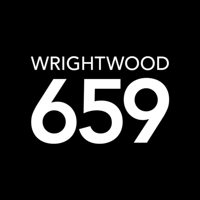The US Pavilion entry for the 17th International Architecture Exhibition of La Biennale di Venezia
May 6–July 16, 2022
659 West Wrightwood Avenue
Chicago, IL 60614
USA
Hours: Friday 12–7pm,
Saturday 10am–5pm
info@wrightwood659.org
American Framing examines the overlooked yet familiar architecture of the country’s most common construction system—wood framing—and argues that a profound and powerful future for design can be conceived out of an ordinary past.
First presented as the U.S. Pavilion for the 17th International Venice Architecture Biennale, this exhibition comes at a time when national cultural practices are struggling with their histories. How do we come to terms with our past choices? What kinds of futures can we create?
The exhibition begins with its spectacular entryway, a soaring, three-story wood frame structure with an enclosed social space for reflection and conversation. It introduces the world of wood framing as directly as possible by allowing people to experience its spaces, forms, and techniques firsthand. The full-scale work expresses the sublime and profound aesthetic power of a structural method that underlies most buildings in the United States.
Within the galleries at Wrightwood 659, visitors also will discover newly commissioned photographs from visual artist Daniel Shea, and photographer and videographer Chris Strong, that address the labor, culture, and materials of softwood construction. A collection of scale models, researched and designed by students at the University of Illinois Chicago School of Architecture, presents the history of wood framing. Two sets of wood furniture by Ania Jaworska and Norman Kelley are installed in the gallery.
Wood framing has a fascinating history. Originating in the early 19th century, softwood construction was a pragmatic solution to the need for an accessible building system among settlers with limited wealth, technical skills, and building traditions. Wood framing has been the dominant construction system ever since—more than 90% of new homes in the U.S. today are wood framed. The accessibility that shaped its early development continues to influence contemporary life and reflect democratic ideals in subtle but powerful ways. Softwood construction is exceptionally egalitarian; no amount of money can buy you a better 2x4 board. This fundamental sameness paradoxically challenges the American culture of individuality by unifying all superficial differences. Buildings of every size and style are made of wood framing.
Despite its ubiquity, wood framing also is one of the country’s most overlooked contributions to architecture. A variety of prejudices and habits explain its absence from intellectual discourse, which tends to zero in on the exotic while ignoring the ordinary. In the case of wood framing, a lack of disciplinary prestige stems from the same characteristics that make it so prevalent—it is easy, thin, and inexpensive. Yet it is these qualities which introduce a flexibility of form, labor, composition, class, sensibility, access, and style that open new possibilities for architecture.
American Framing was co-curated by architects and professors Paul Preissner and Paul Andersen.
American Framing is presented at Wrightwood 659 by Alphawood Exhibitions in cooperation with the University of Illinois at Chicago (UIC). American Framing was originally made possible by The Bureau of Educational and Cultural Affairs (ECA) of the US Department of State and the University of Illinois Chicago for presentation at the Pavilion of the United States at the 17th International Venice Architecture Biennale.
Support for this exhibition is provided by Alphawood Foundation Chicago.






